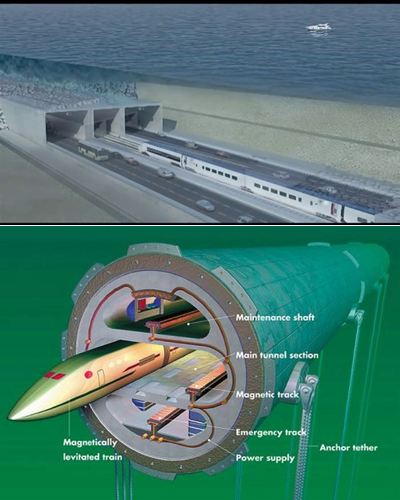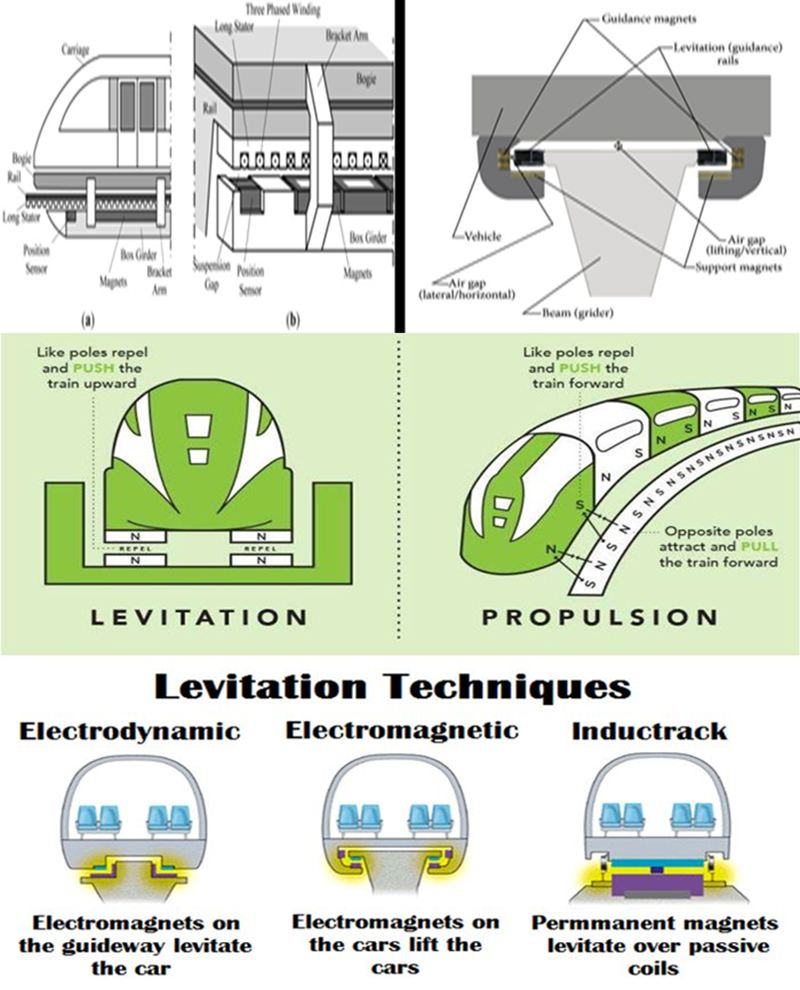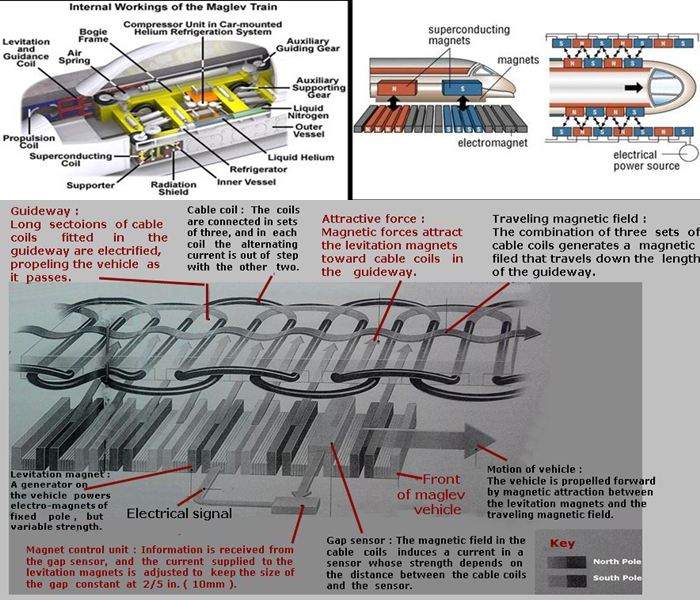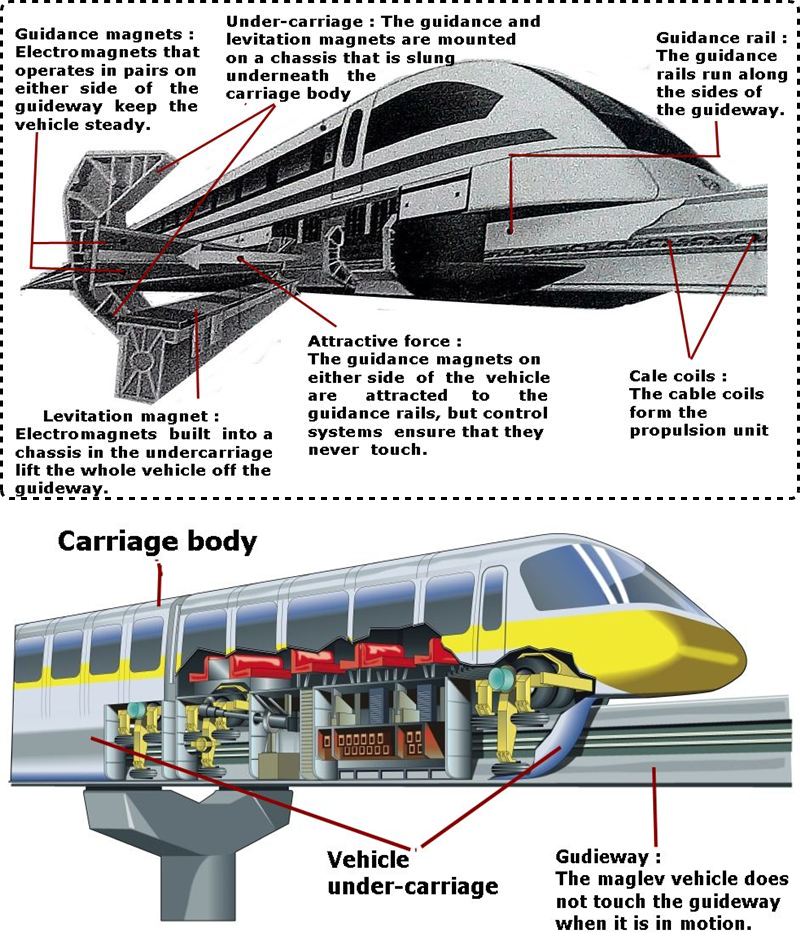Maglev and Monorails

The development of high-speed trains has kept railroads competitive with other modes
of transportation and popular with travelers. Less conventional technologies, however,
offer faster, safer, and more environmentally friendly solutions for intercity journeys and
urban transit. The challenge for these technologies is to attract investment to ensure they
become viable modes of transportation.
Monorail trains
--------------------------
Monorails run on single , precast concrete beams that are usually elevated , but can also be at or
below ground level. The trains may travel on top of the beam or hang underneath it. Electrically
driven horizontally and vertically aligned rubber wheels propel the train and keep it stable on the
beam. Rubber tires running directly on the smooth beams suffer little wear, and maintenance is
low compared to metal-wheeled trains that run on metal rails.

Levitation and Propulsion
=========================
Cable coils wound underneath the guideway generate a traveling magnetic field that moves
down the length of the guideway. Magnetic forces of attraction between this field and
electro-magnets on the vehicle levitate the vehicle and drag it along behind the advancing field.
Thus, the guideway acts as both levitation and the propulsion unit. The speed at which the
guideway field travels can be varied for acceleration or braking.

Maglev vehicles
==================
Maglev (short for "magnetic levitation") is a unique mode of transportation that uses
magnetic fields to levitate a vehicle above a specially constructed guideway. Maglev
vehicles, operating at speeds of about 280 mph (450 km/h), could compete with
short-haul flights between cities by offering comparable journey times. Maximum
speeds of 343 mph (550 km/h) have already been achieved at test tracks in Germany
and Japan. Such high speeds are possible due to the lack of contact between the
guideway and the vehicle when it is in motion, so contact friction , a major impediment
for conventional trains, does not have to be overcome. The main source of resistance to
a maglev vehicle is air resistance, which can be reduced by streamlining. Unlike
conventional trains, maglev vehicles do not carry propulsion units on board, instead, the
propulsion system is fitted in the guideway. The innovative guiding and propulsion system
eliminate the need for wheels, brakes, motors, and devices for collecting , converting , and
transmitting electrical power . Meglev vehicles are therefore lighter, quieter, less prone to
wear than aircraft over the same distance. Despite offering the possibility of rapid, and
energy-efficient transportation, maglev has not yet made the transition from experimental to
commercial technology, because of the high cost of constructing new networks of dedicated
guideways.
However, conventionally-propelled monorail trains , which also run on specially constructed
guideways, are gaining popularity as a mode of urban transit. Quiet, efficient , and relatively
non-polluting, they are seen as a solution to the increasing traffic congestion in many modern
cities.
Maglev vehicles are constructed in two parts. The carriage body in which passengers travel is
mounted on an under-carriage that houses the levitation an guidance magnets. The under-carriage
wraps around the guideway and systems controlling the magnets ensure that the vehicle remains
very close to the guideway, but does not touch it.
